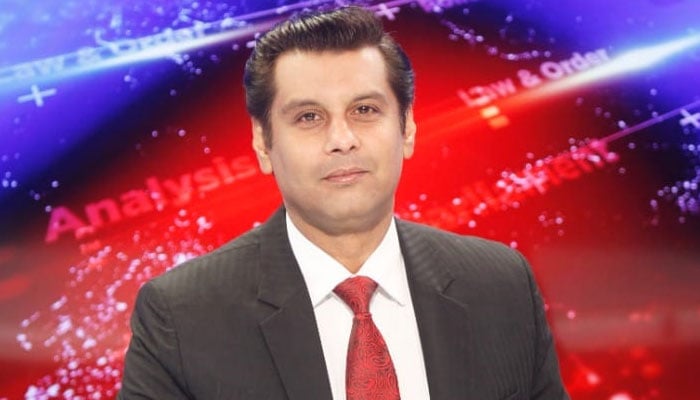[ad_1]
- Pakistan and Kenyan doctors issues contradictory post-mortem reports.
- IPOA team has established that police were involved in shooting and matter falls within her organisation’s mandate.
- IPOA chief says they have established that Sharif “died as a result of a gunshot wound on his head”.
NAIROBI: The chairperson of Kenya’s Independent Policing Oversight Authority (IPOA) has said that Arshad Sharif’s murder at the hands of Kenya’s police is being fully investigated to establish the facts surrounding the shooting.
In an interview with Geo, IPOA Chairperson Anne Makori said the independent body has started a “full and thorough investigation to establish the circumstances surrounding the shooting” of Arshad Sharif on the night of October 23 by Kenya’s General Services Unit (GSU) officers.
The IPOA chairperson also addressed the reports claiming that Sharif was brutally tortured before being killed.
A leading TV anchor aired pictures of the alleged torture on the deceased’s body. Several sources aware of the investigation and those close to the deceased’s journalist have also confirmed seeing torture marks on the dead body.
When asked whether IPOA took the issue seriously, Anne Makori said: “In tandem with my announcement earlier that IPOA had dispatched a Rapid Response Team to the scene of the incident to launch an investigation into the alleged fatal shooting of Mr Arshad Mohammed Shariff, a Pakistan National.”
She said the IPOA team established that the police were involved in the shooting and the matter falls within her organisation’s mandate.
Makori said that they have established that Sharif “died as a result of a gunshot wound on his head”. She didn’t mention the second shot that entered Sharif’s chest from his back and exited from the front, rupturing his lungs.
Geo News believes that the IPOA chief’s assessment is based on a report issued following an autopsy carried out by Government Pathologist Dr Johanes Oduor. The autopsy contradicts the one conducted in Pakistan which saw the recovery of a bullet from Sharif’s chest.
Dr Oduor two weeks ago told Kenyan media that if a bullet is found in the body of a dead person during post-mortem they usually hand it over to the police for investigations.
Makori said the killing matter was now under a thorough probe and “IPOA will make appropriate recommendations once investigations are completed”.
The National Police Service (NPS) in Kenya a day after the incident released a statement which was signed by former police boss Bruno Shioso which said the law enforcement agency is investigating the incident for appropriate action.
“The National Police Service regrets this unfortunate incident. Competent authorities are currently investigating the incident for appropriate action,” Shioso said.
The Kenyan police have claimed that Sharif was in the vehicle with Khurram Ahmed and they approached a police roadblock when flagged to stop they went on driving which led to a deadly shootout.
A police report from the Magadi Police station said Sharif’s shooting was a case of mistaken identity as GSU officers tracked a stolen car on Kuenia Farm/Kamukuru Road in Kajiado county. They were asked to stop but they did not.
“It was then they heard gunshots towards their vehicle directed from the front and rear. They did not stop and proceeded with the journey.”
The police report stated that Sharif died from a gunshot at the back of his head which exited in the front after the vehicle came under a hail of bullets from the officers.
In Pakistan, eight pathologists conducted a second post-mortem on the Pakistani journalist who found a bullet lodged in his chest.
The pathologists from the Pakistan Institute of Medical Sciences (PIMS) said they had found a metal, which they later identified as a bullet. They handed the bullet to police officers in Pakistan.
Investigators said they believe the bullet is a crucial lead in the ongoing investigations into the murder of Sharif, which has been marred by controversy.
It remains unclear whether the team of pathologists that conducted a post-mortem on him had noticed the bullet.
Sharif arrived in the Kenyan capital on August 20 and died on October 23 in a shootout in which his driver Khurram Ahmad survived miraculously.
The IPOA provides for civilian oversight over the work of the police in Kenya. It investigates deaths and serious injuries arising from police action and then recommends disciplinary action or prosecution.
However, IPOA has in the past been accused of taking too long in dealing with cases making the victims wait for a long time before they get justice.
[ad_2]

